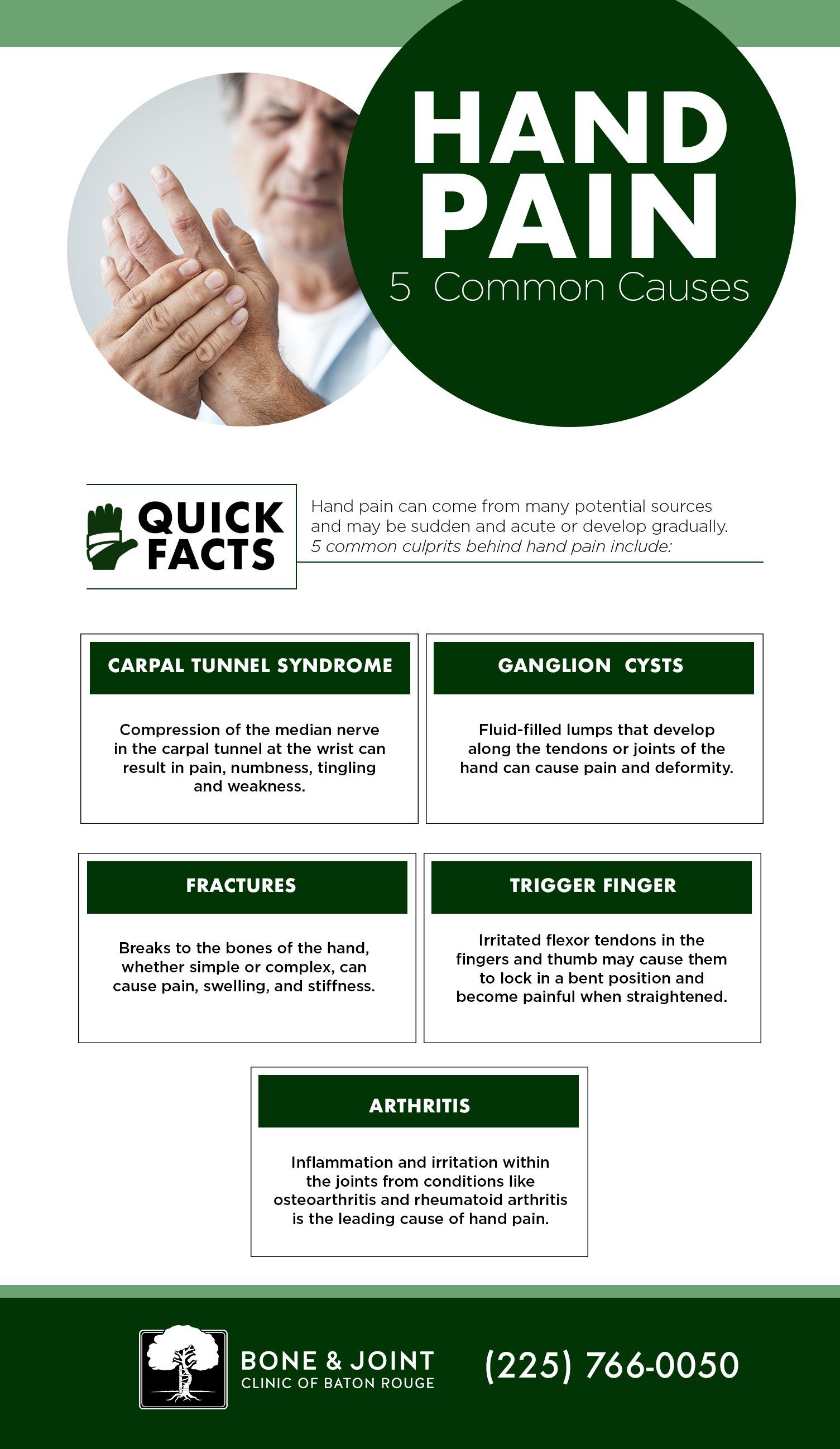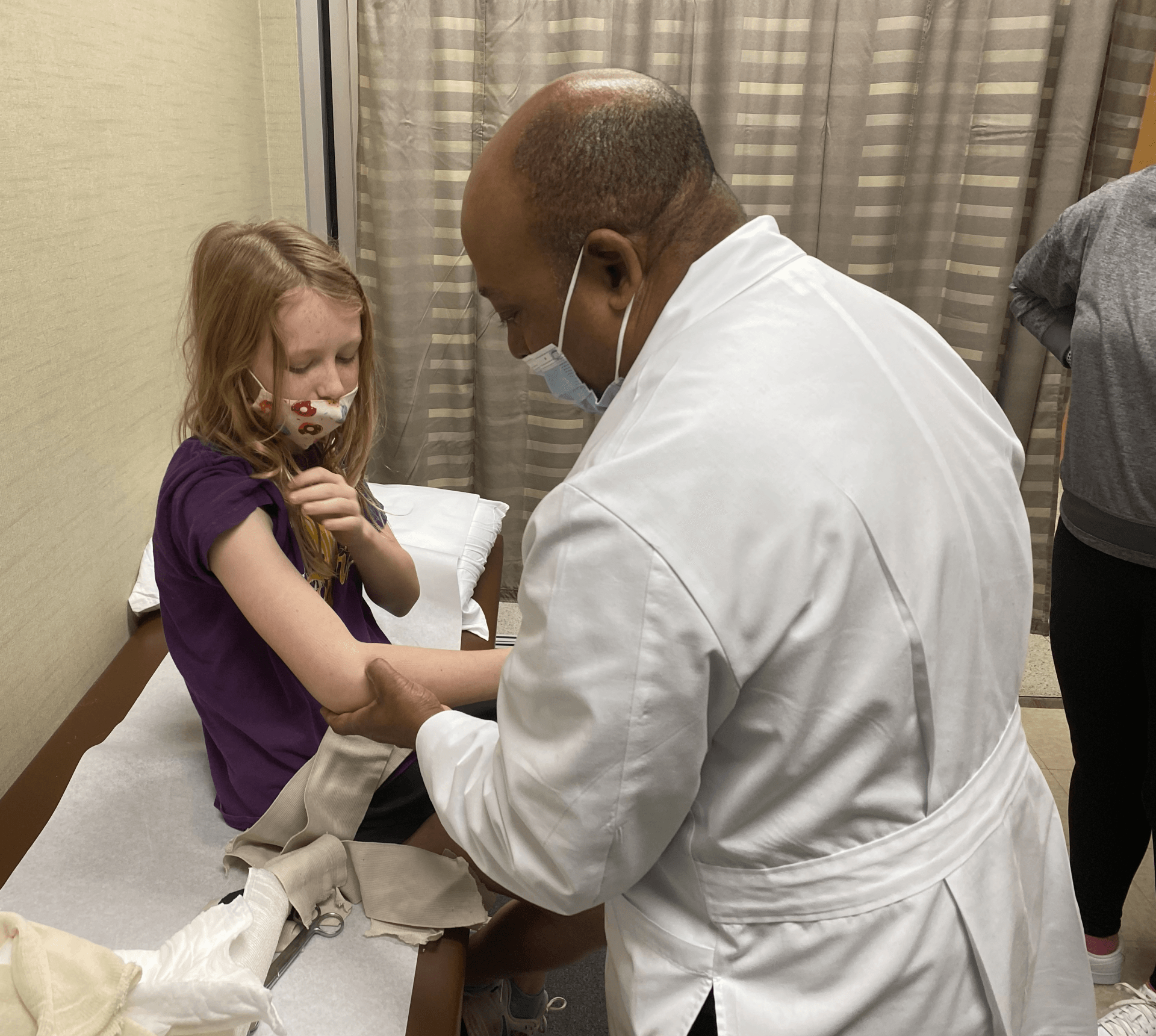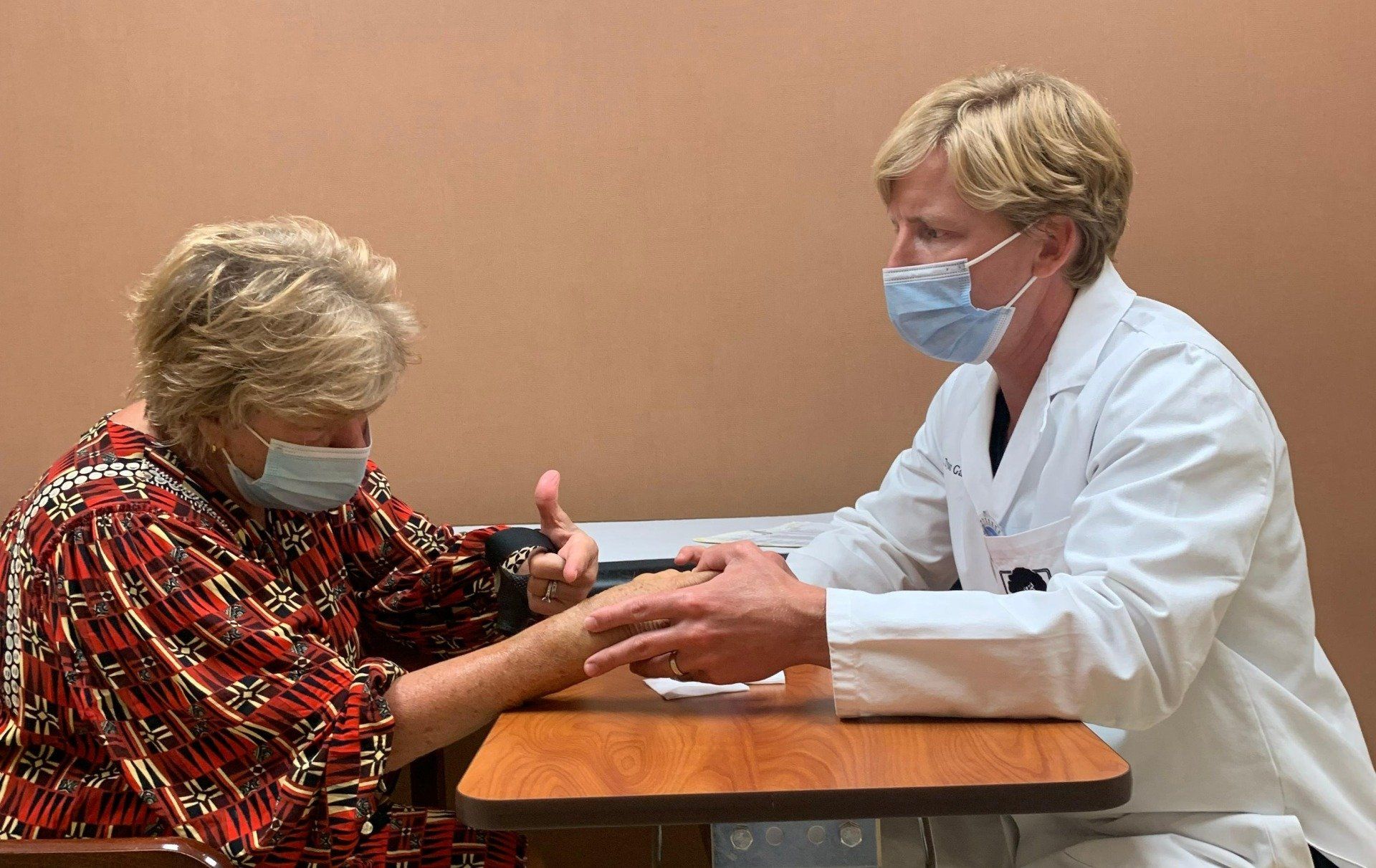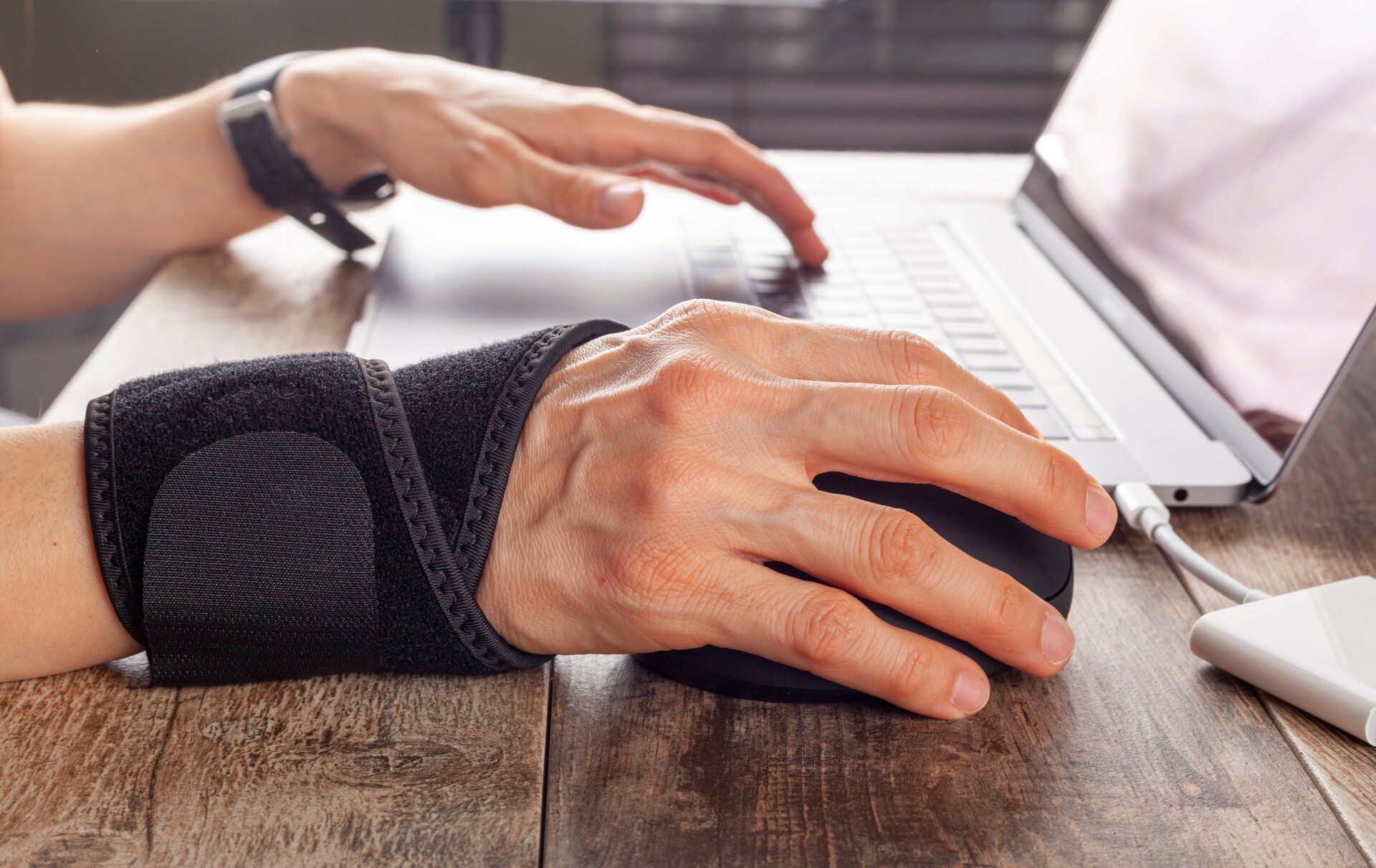Hand Injuries and Conditions
Hand Injury Overview
Our hands are often busy at work, being required to perform many of our day-to-day tasks. However, when injury strikes any one of the hand's many bones, ligaments, or tendons, these tasks can become exponentially more difficult. Patients often experience symptoms such as swelling, stiffness, and pain that are intense enough to keep them from doing the things they need each day. Below are some of the more common causes of hand-related injuries.
Common Hand Injuries and Conditions
While there are countless types of conditions and injuries which can impact the hands, many of the most common can be categorized into the following:
- Arthritis -
Osteoarthritis (also known as degenerative arthritis) and
rheumatoid arthritis are the most common forms which may affect the joints in the hands, wrists, and fingers.
- Cysts or Tumors - Ganglion cysts are the most common type and is often located on the top or inside of the wrist.
- Sudden or Acute Injuries - These injuries are often the result of trauma such as an accidental fall or sports injury.
- Overuse Injuries -
Tendons, ligaments, and joints of the hand can experience inflammation or irritation as a result of repetitive use over a long period of time.
Types of Acute Hand Injuries
Acute injuries occur suddenly as the result of factors such as impact or sudden movement. Frequently, these types of injuries will fall into one of the following three categories:
- Sprains -
Sprains occur when the ligaments connecting the bones in the hand become stretched or torn. Treatment will depend on the degree, or severity, of the sprain and can range from home remedies to surgery.
- Strains -
Strains occur when the soft tissues of the hand such as muscles and tendons are injured. Like sprains, these injuries vary in severity from stretched to completely torn. Likewise, they may be treated with methods as simple as ice and compression in mild cases and up to surgical repair in severe instances.
- Fractures -
Fractures are breaks in one or more bones of the hand, wrist, or fingers. Unlike sprains or strains, fractures require medical treatment. However, only the most severe cases require surgery. Most can be successfully treated using methods such as casting, splinting, and
physical therapy.
Types of Overuse Hand Injuries
Overuse hand injuries are common, particularly among older adults, athletes, and those with specific occupation requirements. These injuries occur after too much repetitive motion places too much stress on a particular joint or tissue. Commonly seen forms of overuse injuries include:
- Tendinitis - Tendinitis is marked by painful inflammation of a tendon, often near a joint. It often occurs in the wrist or fingers. Generally, it is easily treated with rest and ice. Although methods such as splinting, corticosteroid injections, or surgery may be needed.
- Carpal Tunnel Syndrome - Carpal tunnel syndrome (CTS) is a condition in which the median nerve becomes compressed within the carpal tunnel of the wrist. It can result in itching, tingling, burning, and numbness within the hand, fingers, and arm and generally continues to worsen over time. Many with the condition will eventually require carpal tunnel release surgery.
- De Quervain's Disease - De Quervain's disease causes inflammation of the sheath surrounding the tendons connecting the thumb to the wrist. The result may be pain that is intermittent at the base of the thumb or that worsens with use. Most cases can be resolved conservatively using splints, injections, or nonsteroidal anti-inflammatory drugs (NSAIDs).
Video: The Six Main Causes of Hand Injuries
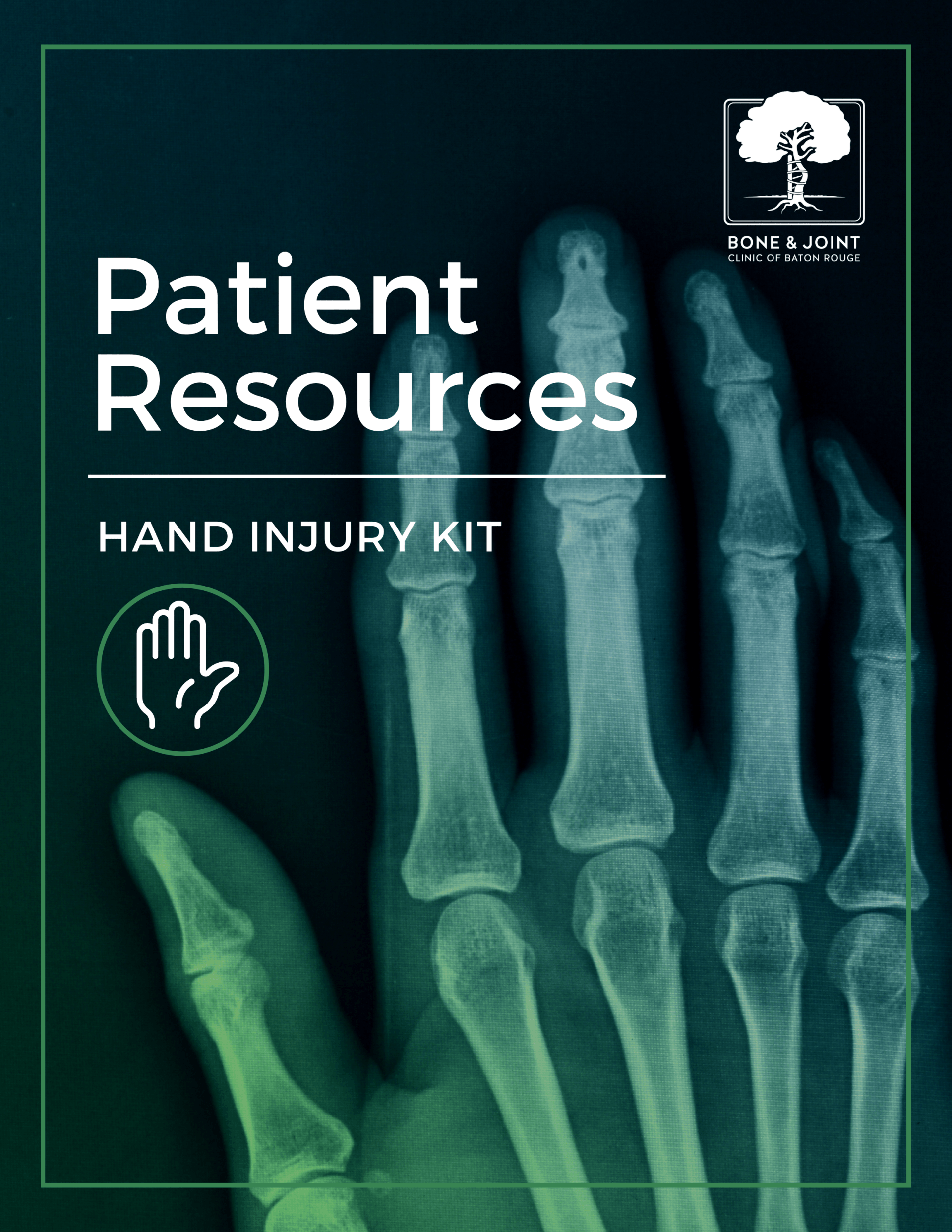
Download the Hand Patient Kit today
Information on all hand injuries and conditions in one place.
Discover the benefits of Hand Procedures
The Bone & Joint Clinic provides complete hand and upper extremity care to correct disorders caused by accidents, sports injuries, disabilities or degenerative diseases.
The Hand Injury Kit includes:
- Infographic
- Video
- Fact Sheet
Baton Rouge Hand Specialists
RELATED READING

